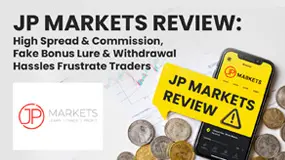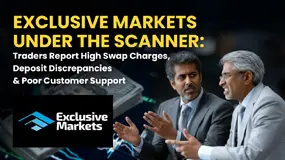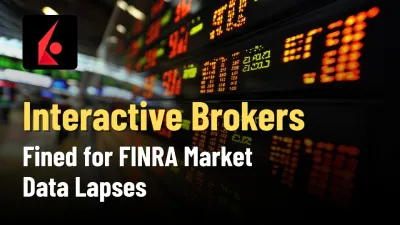简体中文
繁體中文
English
Pусский
日本語
ภาษาไทย
Tiếng Việt
Bahasa Indonesia
Español
हिन्दी
Filippiiniläinen
Français
Deutsch
Português
Türkçe
한국어
العربية
How Forex Brokers React to Global Events
Abstract:The foreign exchange (forex) market is a highly dynamic arena, where global events significantly shape market trends and prices. In this fast-paced environment, both traders and brokers must stay attuned to major economic indicators and geopolitical shifts. Key factors like interest rate decisions, employment reports, and political developments not only affect currency prices but also impact broker offerings, spreads, and volatility. Understanding how brokers respond to global events is crucial for traders aiming to navigate the market more effectively.

The foreign exchange (forex) market is a highly dynamic arena, where global events significantly shape market trends and prices. In this fast-paced environment, both traders and brokers must stay attuned to major economic indicators and geopolitical shifts. Key factors like interest rate decisions, employment reports, and political developments not only affect currency prices but also impact broker offerings, spreads, and volatility. Understanding how brokers respond to global events is crucial for traders aiming to navigate the market more effectively.

One of the most important elements that drive currency movements in the forex market is the release of economic data. Economic indicators such as interest rate decisions, gross domestic product (GDP) reports, inflation data, and employment statistics provide insights into the health of a nations economy. Forex brokers carefully monitor these data points to adjust their offerings and anticipate market shifts.
Interest rate decisions are especially influential. Central banks, like the Federal Reserve or the European Central Bank, regularly meet to set interest rates, which directly influence the value of their respective currencies. When rates are increased, the currency often strengthens due to higher yields, making it more attractive to investors. Conversely, a rate cut can weaken a currency, leading to volatility in the forex market. Brokers anticipate these fluctuations, and often, spreads widen around these key announcements, reflecting the heightened uncertainty and risk.
Employment reports, such as the U.S. Non-Farm Payrolls (NFP), are another critical factor. This data offers a snapshot of the labour market's health and can signal the overall state of the economy. Positive employment data tends to strengthen a currency as it implies economic growth, while weak figures can cause depreciation. Brokers typically widen their spreads and adjust leverage ratios ahead of such reports, as volatility can spike dramatically following these announcements.
Global events such as natural disasters, political instability, or sudden geopolitical tensions can cause sharp volatility spikes in the forex market. During these times, currency prices can swing rapidly, and brokers need to adapt their offerings in real time. Most brokers increase their spreads during periods of heightened volatility to manage risk, as the likelihood of price gaps or slippage increases. Traders should be aware of this, as these spread changes can significantly affect the cost of trading.
Additionally, brokers may reduce leverage during volatile times. Higher leverage amplifies both gains and losses, and in unstable conditions, the risk to both traders and brokers escalates. To mitigate this risk, brokers often impose lower leverage caps, particularly on highly affected currency pairs.
For traders, predicting how brokers will react to upcoming economic news can be a useful tool for managing risk. Major events like central bank meetings, economic forecasts, or international trade agreements tend to be scheduled well in advance. Traders can use these schedules to anticipate broker behaviour, such as increased spreads or tighter trading conditions, and plan their strategies accordingly.
It is also important to be aware of the “news trading” phenomenon. This strategy involves placing trades based on anticipated market reactions to upcoming economic reports. While news trading can be lucrative, it is also high-risk due to the sudden price swings and spread widening that typically follow major announcements. Traders should be prepared for increased costs and should factor in the potential for slippage when planning their trades around global events.
Global events and economic indicators will always play a critical role in shaping forex market dynamics, and brokers must adapt their offerings accordingly. For traders, understanding how brokers react to interest rate decisions, employment data, and unforeseen global crises is essential to managing risk and optimizing trading strategies. While volatility and widened spreads can present challenges, they also offer opportunities for those who approach the market with a careful, well-informed plan. In this ever-evolving landscape, patience and preparation remain key to successful forex trading.

Disclaimer:
The views in this article only represent the author's personal views, and do not constitute investment advice on this platform. This platform does not guarantee the accuracy, completeness and timeliness of the information in the article, and will not be liable for any loss caused by the use of or reliance on the information in the article.
Read more

JP Markets Review: High Spread & Commission, Fake Bonus Lure & Withdrawal Hassles Frustrate Traders
Have you been lured into opening a JP Markets Forex Trading Account with a high bonus offer that never existed? Have you found the spread and commission charges higher on JP Markets Login than what’s advertised on the broker’s website? Wondering why you are not able to withdraw funds from your trading account? Well, all of these hint at a potential forex investment scam. Many traders have expressed their disappointment while sharing the JP Markets Review online. In this article, we have shared certain complaints. Take a look at them.

Angel one 2025 Review & Complaints
Angel One is a well-known name in the forex market. People are familiar with the name , but is this broker really worth your interest? What do real users say about Angel One, and what complaints have they shared? In this Angel One 2025 review, you will explore all these details.

Exclusive Markets Under the Scanner: Traders Report High Swap Charges, Deposit Discrepancies & More
Is your forex trading account experience at Exclusive Markets far from good? Do you witness high swap fees and daily charges? Does the deposit fail to reflect in your Exclusive Markets Login? Don’t receive adequate response from the customer support official on your trading queries? You are not alone! Traders have already alleged that the forex broker is involved in these activities. In this Exclusive Markets WikiFX review article, we shared some traders’ comments. Read on to know about them.

Interactive Brokers Fined for FINRA Market Data Lapses
Interactive Brokers fined $150,000 by FINRA over Vendor Display Rule violations and supervisory gaps; firm adds real-time consolidated data displays.
WikiFX Broker
Latest News
Angel one 2025 Review & Complaints
Latest FCA Daily Alerts and Consumer Warnings for 2025
Webull Widens Crypto Futures with Coinbase Derivatives
Is Nash Markets Regulated or Risk? Truth About Nash Markets’ License & Withdrawal Issues
CySEC Blocks Certification Access to Combat Advisor Impersonation
Exclusive Markets Under the Scanner: Traders Report High Swap Charges, Deposit Discrepancies & More
Pinched By Penny Shortage, US Retailers Beg Congress To Step In
Saxo Bank Japan Expands European Stock Portfolio with UBS, Ferrari, and Other Major Names
Amillex Broker Affiliate Program: A Complete Guide to Earning with Referrals
New SC Rules Take Effect in November 2025: What’s Next for Finfluencers?
Currency Calculator



